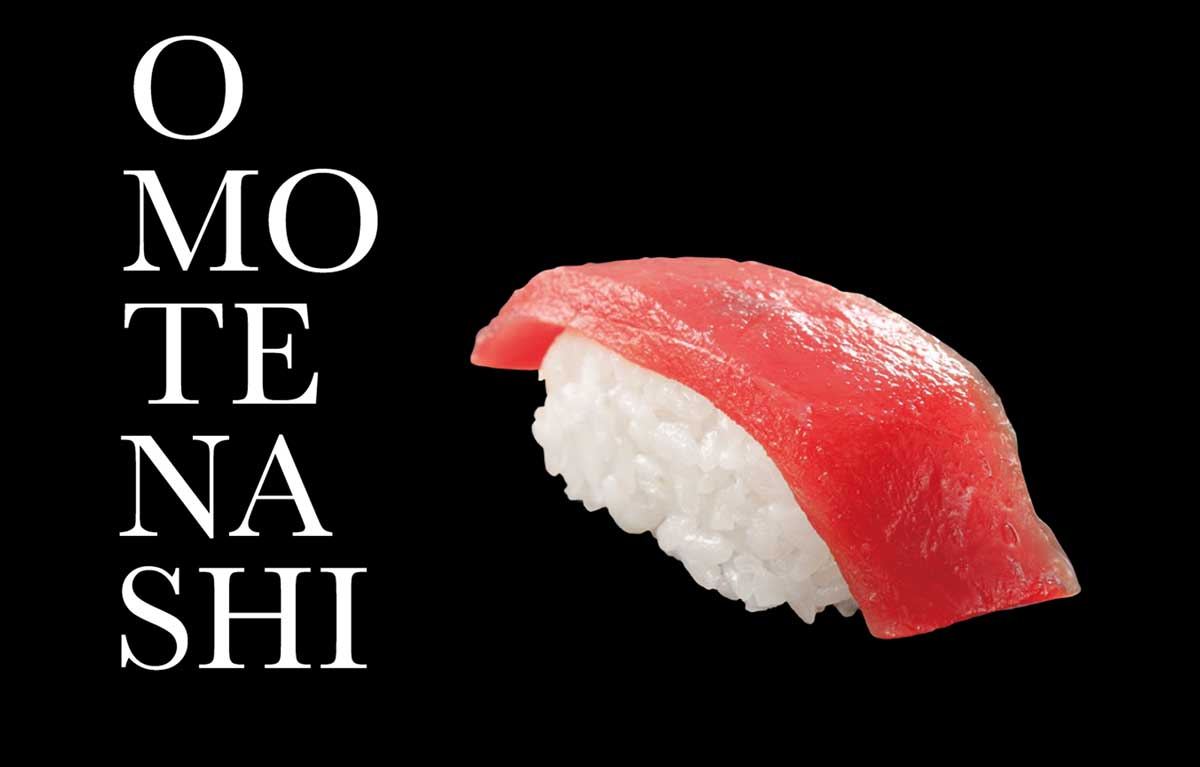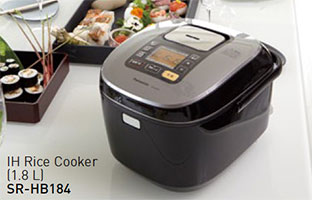ASPIRE 2016 Vol. 01 OMOTENASHI
What is “Omotenashi?"
The Japanese word omotenashi refers to cordial hospitality. It has two Kanji characters: "omote," which means "front," and "nashi," which means "none." It means treating guests with straightforward respect. It also refers to the things that we can see (things in front) and those we can't see (like the soul). The word gained popularity after being used in the bidding speech for the 2020 Tokyo Olympic Games.
Sushi − Keen Dedication to
Flavor and Presentation
Sushi is popular worldwide, and consists of seafood pressed together by hand with rice that is mixed with vinegar (called nigiri-zushi). Its history goes back to about the start of the 1800s. Sushi is also attracting attention for its health benefits, such as the extensive use of fish, and the use of vinegar, which relieves fatigue and enhances the appetite. Of all sushi, nigiri-zushi is considered to be the most difficult to make. The pressing technique is acquired only
after a long period of training, as expressed in the Japanese saying “three years of rice making and eight years of pressing.” Sushi is compressed in a way that introduces just the right amount of air between each grain of rice. This enhances the flavor, so it ideally stays together when you hold it in your hand and gently comes apart in your mouth. The pressing has to be finished in an instant, or it will become dry.

The Artisan's Skill at Drawing Out
the Flavors of the Ingredients
Sushi chefs harmonize vinegared rice with fresh seafood. When hand-pressed sushi (nigiri-zushi) first emerged, refrigerators did not exist. As time passed, seafood lost its freshness. Thus, innovations were developed to keep sushi flavorful. Typical examples are using salt and vinegar, steaming or boiling, and soaking in a sauce.
Refrigeration and distribution advances have greatly improved, but ancient wisdom has been passed on from each sushi artisan to the next. Sushi chefs are dedicated to using high-quality ingredients because the cuisine is so simple. The skill of the artisan produces the
delightful flavors.
Sushi restaurants place the sushi chef in the kitchen facing the customer over a long counter. It is delightful to watch a sushi chef slicing seafood right before your eyes. Even the conversation is refined and enjoyable.
The sushi chef serves each customer one by one, considering the richness and lightness of the flavor. Along with sushi, you can enjoy the ancient techniques and culture, as well as the refined Japanese hospitality.

Guests Can Also Enjoy Making Sushi.
Entertain Your Guests with a Sushi Party.
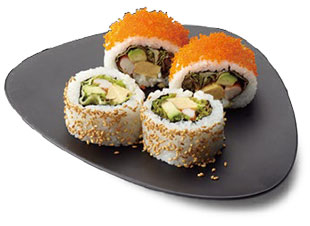
Many people think that making nigiri-zushi at home is difficult; however, it also has its attractions. By rolling up the ingredients, it's easy to make maki-zushi at home. We also see creative sushi using ingredients and styles unbound by Japanese traditions. It's fun to make sushi in a carefree manner. Just consider sushi to be a combination of vinegared rice with other ingredients. How about trying some casual sushi for a party. It's an easy finger food, making it perfect for parties. You'll also want to use fun colors and ingredients.
You can cut up fresh ingredients into sizes for easy sushi preparation. Your guests can make their own sushi. It's great to discover your own favorite flavors by choosing and combining the ingredients you like. It's a conversation starter. Entertaining guests may seem difficult, but the secret is placing importance on caring for others.
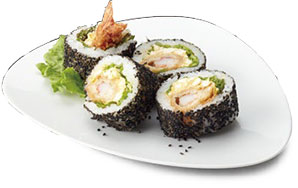
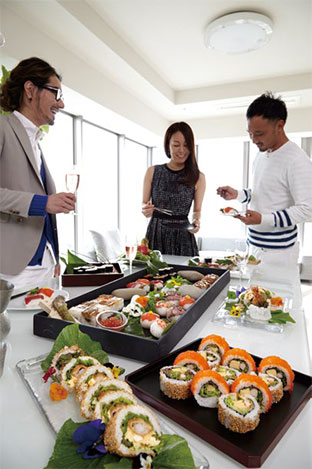
How to Make a
California Roll
Ingredients (For 1 roll)
- Laver (seaweed, 21×19 cm) : 1 sheet
- Sushi rice* : Approx.170 grams
- Lettuce : 1 large leaf
- Crab kamaboko (fish paste) : 2 pieces
- Grilled egg : To taste
- Avocado : To taste
- Flying fish roe : To taste
*How to make sushi rice
Place a piece of konbu seaweed into water and rice (approx. 300 grams of rice is an easy amount to handle) and boil it, then add flavored vinegar (50 ml of vinegar with 14 grams of sugar and 5 grams of salt), and quickly mix it.

Place the laver onto the rolling mat. Spread the sushi rice onto the laver, and make it flat. Cover the rice with a piece of plastic wrap, then hold the laver and turn everything over onto the other side.

Put the lettuce, crab kamaboko (fish paste), grilled egg, and avocado onto the center of the laver.
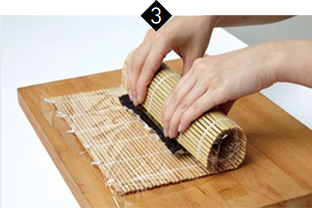
Hold the edge of the mat and roll it, positioning the rolled part at the bottom. Maintain the roll's shape, then tighten it by slightly pulling on the mat.

Remove the rolling mat, cut the roll into slices together with the plastic wrap, and then remove the plastic wrap. Finally, coat the outside of the roll with the flying fish roe.
Buy in Bulk and Keep Food Fresh
Enjoy Tastier Meals with
“-3ºC Prime Fresh freezing”
Because you're busy every day, it helps to buy groceries in bulk on weekends and holidays so you always have what you need on hand. However, freshness is a problem. Naturally, much of it goes into the freezer, but thawing is time-consuming and bothersome. And the texture and taste of thawed meat just aren't the same.
Have you experienced this? To solve this problem, we recommend the Panasonic refrigerator with Prime Fresh freezing, which lightly freezes foods at approximately -3ºC. This is a temperature zone between chilling and freezing. It's a storage method that quickly and delicately freezes just the surface of the food.
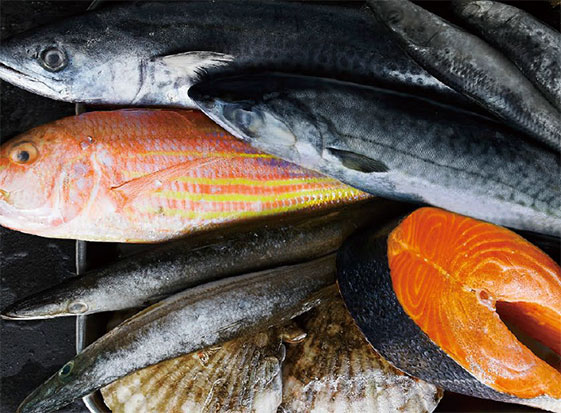

Stays Fresh for Approximately
1 Week* without Freezing
Meat or fish is stored in the Prime Fresh freezing compartment. The food's surface is partially frozen to maintain freshness for about 1 week.* You can buy groceries in bulk, and prepare and store large amounts. This lets you have a wide variety of dishes for every meal.
* Storage of sardines. According to a Panasonic survey, the freshness period differs depending on the degree of freshness before storage, the method of freezing, and the refrigerator usage conditions.
Skillful Use Simplifies Cooking!
1 : No Thawing Needed, Easy Cutting!
Food can be easily cut as soon as it is taken from the refrigerator. Since there is no thawing needed, you save all that waiting time. Just quickly cut it and start cooking. There are also no thawing problems, like uneven thawing or dripping, and no worries about flavor loss.
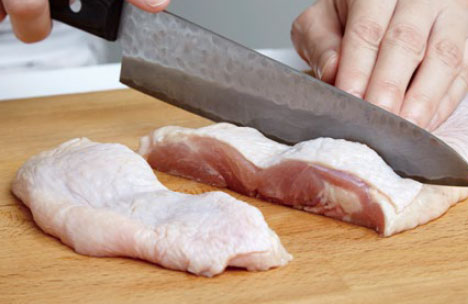
2 : Easily Scoop Out Just as Much as You Need
By partially freezing sauces, you can scoop out what you want to use that day. Then put the rest back into the Prime Fresh freezing compartment. There's no more need to divide sauces into small portions, or to worry about having to use it all up.

3 : Experience New Frozen Textures
When you lightly freeze fruits, the surface becomes crunchy while the inside stays fresh. Simply placing a cup of yoghurt into the refrigerator gives you a new soft freezing dessert to enjoy on a hot day. You can find many new ways to use partially frozen foods.

Panasonic Refrigerators
Visit Panasonic web site to check out the latest Kitchen Appliances products!


